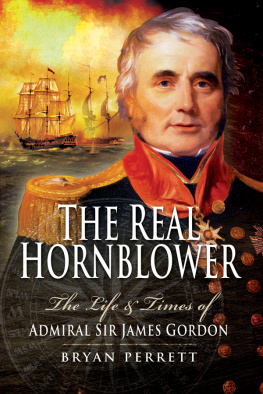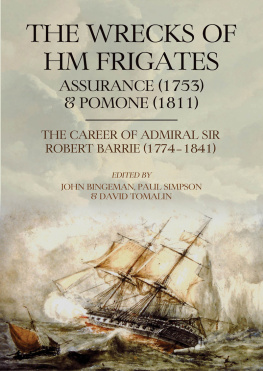OTHER BOOKS BY BRYAN PERRETT
Desert Warfare
Tank Tracks to Rangoon
Canopy of War
The Czars British Squadron
A History of Blitzkrieg
Knights of the Black Cross: Hitlers Panzerwaffe & Its Leaders
Liverpool: A City at War
Last Stand! Famous Battles Against the Odds
At All Costs! Stories of Impossible Victories
The Battle Book
Seize and Hold: Master Strokes of the Battlefield
Iron Fist: Classic Armoured Engagements
Against All Odds! More Dramatic Last Stand Actions
Impossible Victories: Ten Unlikely Battlefield Successes

Copyright 1997, 2013 by Bryan Perrett
FIRST SKYHORSE PUBLISHING EDITION 2014
All rights to any and all materials in copyright owned by the publisher are strictly reserved by the publisher.
First published in Great Britain in 1997 by Arms and Armour Press, an imprint of the Cassell Group
All rights reserved. No part of this book may be reproduced in any manner without the express written consent of the publisher, except in the case of brief excerpts in critical reviews or articles. All inquiries should be addressed to Skyhorse Publishing, 307 West 36th Street, 11th Floor, New York, NY 10018.
Skyhorse Publishing books may be purchased in bulk at special discounts for sales promotion, corporate gifts, fund-raising, or educational purposes. Special editions can also be created to specifications. For details, contact the Special Sales Department, Skyhorse Publishing, 307 West 36th Street, 11th Floor, New York, NY 10018 or info@skyhorsepublishing.com.
Skyhorse and Skyhorse Publishing are registered trademarks of Skyhorse Publishing, Inc., a Delaware corporation.
Visit our website at www.skyhorsepublishing.com.
10 9 8 7 6 5 4 3 2 1
Library of Congress Cataloging-in-Publication Data is available on file.
Cover design by Jon Wilkinson
Print ISBN: 978-1-62914-685-0
Ebook ISBN: 978-1-63220-102-7
Printed in the United States of America
C ONTENTS
A CKNOWLEDGEMENTS
I should like to express my sincere appreciation and thanks to the following for their kind advice, assistance and encouragement: to Michael Wilson, who, while serving with the Naval Historical Branch, considerately provided source material which, when followed through, suggested that there was indeed a case to answer; to Rachel Mackenzie of the Maritime Information Centre, National Maritime Museum, who always dealt with my numerous requests for photo copies, chart details, warship histories and other matters with good humoured efficiency; to Christopher Gray, Head of the Picture Research Information Division, National Maritime Museum, who produced so many interesting illustrations of Admiral Gordons life; to John Montgomery, Librarian, Royal United Services Institute for Defence Studies; to John J. Slonaker, Chief, Historical Reference Branch, US Army Military History Institute, Carlisle, Pennsylvania; Bernard F. Cavalcante, Head, Operational Archives Branch, Naval Historical Center, Washington, DC; Vincent J. Vaise, Fort McHenry National Monument; John M. Dervan, Historian, Fort Belvoir, Virginia; The Maryland Historical Society; and Alice S. Creighton, Head, Special Collections and Archives, Nimitz Library, US Naval Academy, Annapolis, Maryland, for their invaluable advice regarding the Potomac and Baltimore operations of 1814; and finally to various departments of Aberdeen City Council and Aberdeenshire County Council for producing so much interesting background material on the Admirals family.
Bryan Perrett
May 1997
Introduction
A H ERO D EEP IN S HADOW
H oratio Hornblower, as the admirable Mr Florence MacCarthy Knox might have commented to his close friend the Irish RM, was born in the middle of his life and from that point proceeded both forwards and backwards in time; further, it might be added, he was conceived long after his death, a circumstance which could be described as the making of him.
Hornblower was, in fact, conceived aboard a tramp steamer named the Margaret Johnson in which his creator, C. S. Forester, had taken passage from California to England via a number of Central American ports and the Panama Canal. During the early part of the voyage it seems that the AngloAmerican War of 1812 was in Foresters thoughts, and in particular the definition as contained within the December 1814 Treaty of Ghent as to when hostilities should legally be deemed to have ended. This was a most important consideration at a time when the speed of communications, whether written or verbal, was no faster than the ships in which they were conveyed. In their wisdom the peacemakers decreed that in the North Atlantic the war would end twelve days after the ratification of the Treaty; in the Baltic, the statutory period was forty days; and in the remoter reaches of the Pacific, one hundred and twenty days. The fact that the last naval engagement of the war the capture of HMS Penguin by the USS Hornet off Tristan da Cunha took place fully five weeks after Congress had ratified the Treaty emphasised the very remoteness of commanders from their political masters.
As the Margaret Johnson meandered from one steamy and romantically derelict harbour to another, Forester reflected that the whole of the Central American isthmus and the entire western seaboard of South America had once formed part of Spains colonial empire. During the Napoleonic Wars that empire had begun to break up as the inhabitants of successive provinces and vice-royalties fought for and won their independence from the mother country; further, the political pattern was even more confused by Spains having been first an ally of Napoleon, and then his bitter enemy.
A plot began to form in Foresters mind. Suppose, for example, that in 1808 the Admiralty dispatched a frigate around Cape Horn with the purpose of supporting a specific group of colonial insurrectos on the west coast of Central America. Having seized the major Spanish naval unit in the area by coup de main , the frigates captain hands her over to the revolutionaries who are led by an unstable local tyrant. Shortly afterwards, Spanish loyalists tell him that Spain and Great Britain, recently foes, are now allied in the common cause against Napoleon, knowledge which his long isolation from Europe has denied him. Horrified by the discovery that he has apparently been fighting on the wrong side, he decides that he must either re-take the other vessel and restore her to the Spanish Navy, or destroy her; nothing less will suffice if he is to escape professional disgrace. The climax of the story is a hard-fought and protracted duel between the two ships from which the British frigate emerges the winner.
If the geo-political setting was original, the story was not and would be recognised by fiction writers as a standard formula in which a tragic mistake is redeemed under the most difficult circumstances. For the project to succeed two further elements would have to be present. The first was strong characterisation, particularly in the case of the frigates captain, who was to be named Horatio Hornblower. Forester, already an established and successful novelist, was clearly a perceptive observer of behaviour under stress, but could he penetrate the thought patterns of a Royal Naval officer of 1808? In fact few men were better qualified for such a task, for in 1927 he had purchased three volumes of the Naval Chronicle , a monthly magazine written by naval officers for naval officers, published between the years 1790 and 1820. Those volumes, wrote Forester, were read and re-read during the months that followed, and perhaps I absorbed some of the atmosphere; certainly I became very familiar with the special mental attitude of naval officers at that time regarding various aspects of their profession.





